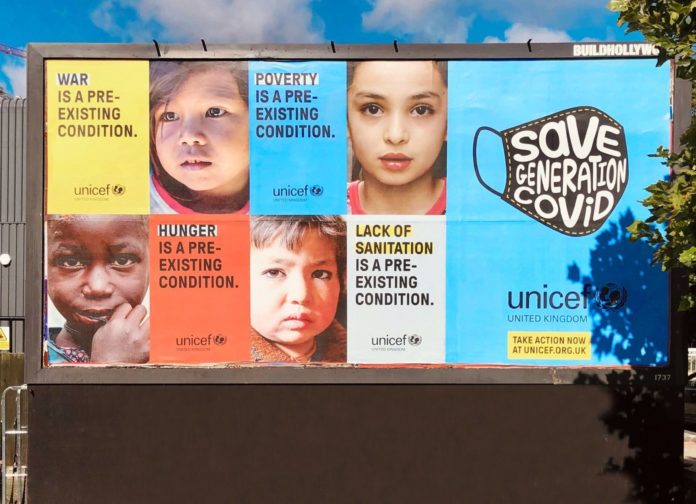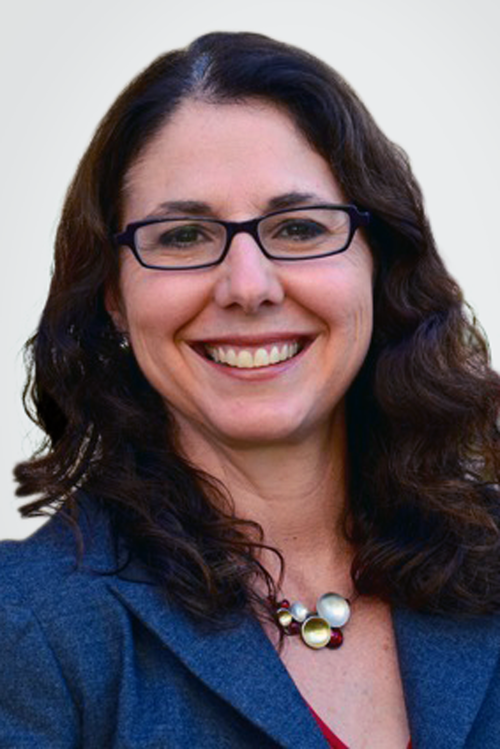
Photo by Étienne Godiard on Unsplash
Healthy moms, healthy dads, a healthy birth and having a strong, healthy foundation in the earliest years of life are essential for children’s long term success. As a state and nation we were failing the youngest even before COVID-19. But now, the pandemic has thrown these challenges into high relief, argues Stephanie Rubin, CEO of Texans Care for Children, a statewide advocacy group.
Last month, I published an article examining the shocking difference in life expectancy reported in a study between West and East Austin that was issued before the outbreak of COVID-19. In some cases, life expectancy varied as much as 17 years between areas like West Lake Hills (88.9 years) and Chestnut (71.9 years) – which is about the difference between the world’s highest life expectancy (Hong Kong) and the country that places 138th globally (Pakistan).
As in other parts of Texas and the United States, the pandemic has exacerbated the disparity in negative health outcomes between the poorest and richest parts of Austin, and threatens to extend the life expectancy gap even further between West and East.

To better understand what is happening in the city, I was put in touch with Rubin. She graciously accepted an offer to sit down (virtually, of course) and discuss current trends children’s health in Austin, the effects of the pandemic on the youngest Austinites, and how issues of child and maternal health fit into the context of racial justice that gripped our country over the summer.
Rubin is not only the CEO of a critically important Central Texas organization dedicated to improving health outcomes for children, she is also a mother herself. Her multi-faceted perspective on recent events and their impact on children was enlightening and encouraging, but also left a strong impression that we have a lot of work to do: from addressing the routine childhood vaccinations delayed by the pandemic to improving access of new mothers to the healthcare they need — with or without COVID-19.
The conversation moved through a variety of topics including the need for education to be more than just content but focused on socialization; the virtues and rewards of finding common ground when advocating for policy change; the importance of continued visits with pediatricians; the worrisome uninsured rate for children in Texas (placing 50th out of 50 states); the danger of opening schools too early; some innovative ways to open schools again once it’s safe, and much more.
I hope you enjoy our conversation, and please head to Texans Care for Children’s website to learn more and find out how you can get involved.
Our full interview below has been edited for clarity.
- RB
ROBERT BREHM: I’m Robert Brehm, columnist and associate editor with Urbānitūs and it is my pleasure to welcome Stephanie Rubin, CEO of Texans Care for Children. Stephanie, how are you doing?
STEPHANIE RUBIN: Great. Thanks for having me.
BREHM: Of course. Could you just tell us about your organization and what you guys do?
RUBIN: Sure. I’m the CEO of Texans Care for Children. We are based in Austin, but we’re a statewide organization and we’re a nonprofit, nonpartisan organization focused on improving the lives and well-being of kids and families in Texas. We work on a number of issues, including child and maternal health, mental health, early childhood, improving our foster care system, and a number of other issues that are really critical to children’s success in Texas.
BREHM: Why is it so important that we focus on childhood health, especially from the pre-natal stage through early childhood? How do issues of child health move beyond children, and what are the outcomes in adulthood that start in that early stage of life?
RUBIN: It’s easy sometimes for policy leaders and people in general to think that suddenly when children get to kindergarten, that’s when we need to start caring about them. The research is clear that healthy moms, healthy dads, a healthy birth, and having a strong, healthy foundation in these early years is what sets kids up for success in the long term, and gets them ready for school. We’re talking about strong health coverage for parents, and for kids. We’re talking about access to high quality early education experiences, and meeting developmental needs. We’re talking about mental health support for parents and kids. We’re talking about enough food, safe housing, the whole range of things that make families able to thrive in what are tough environments in a normal year. Now we have COVID on top of that. Parents of all types, all over the state are struggling to stay healthy and to keep their kids engaged. Everyone’s worried about how kids are going to do in school, and how that will affect their kids long term.
BREHM: Absolutely. More broadly, I’d like to talk about one really often used public health metric — life expectancy. That metric is dependent a lot on infant mortality, but I think that lately it’s worth moving beyond that as an indicator and ask how, if the child can survive the birthing process and early infancy, what other public health metrics are affected by early childhood health?
RUBIN: Sure, but let’s back up to infant mortality for a second before we move along. In Texas, we’ve improved infant mortality and health, but there are still pretty stark disparities. The same is true with maternal health and rates of maternal mortality – which are much higher for Black women, with that racial disparity also being true with infant mortality. Though we’ve made some progress, we know leaders at the community and state level are really interested in improving there. I think what’s important about child health is that, we know from research and we know when we’re a parent: kids need a quality educational experience. That means more than just going to school and learning numbers and letters.
They have to be able to be social beings. They have to be able to be prepared to be in a classroom. They have to be able to communicate their feelings and know how to cope and calm themselves down. These skills are critical in early childhood, and necessary for proper school readiness. That’s what you get from high quality childcare. Pre-K is not just the pre-academic pieces, but also the social executive function skills that lots of kindergarten teachers will say, “If a kid shows up, really doesn’t know how to be in a group setting, isn’t used to handling tasks alone, or sharing in a group, that makes it really difficult for them to succeed, which leaves a lot of catching up to do.”
BREHM: So it goes much beyond whether or not the child has access to actual pediatric care from a doctor?
…Since COVID, the number of children being seen by a pediatrician has gone way down, even though pediatricians are there for in-person and tele-health support. That’s worrisome…
RUBIN: The pediatric piece is really important. If a kid has developmental difficulties, the pediatricians and the pediatric staff can spot it, then they can refer families very early on to get support. If we wait until they get to school, then those problems are very hard to address. It’s important to see the pediatrician for vaccinations. Finally, the truth is that when parents are surveyed about who is the most trusted source of information for them in terms of parenting and child health, it’s the pediatrician. Fortunately, before COVID hit, most families who were enrolled in Medicaid had their kids going to their well-checks and seeing their pediatrician.
Since COVID, the number of children being seen by a pediatrician has gone way down, even though pediatricians are there for in-person and tele-health support. That’s worrisome. Kids have not been showing up as much for vaccines, and pediatricians have definitely sounded the alarm. The other thing that that’s very important in a pediatric visit – these are trusted people who have eyes on kids. There’s a lot of worry in Austin and across the country that there’s perhaps a significant amount of child abuse and neglect going on that is not being reported because adults outside the family are not seeing those children. And so we may see [once schools open] kids coming to school who’ve had real signs of trauma or have been under-fed or neglected.
BREHM: You’re saying under normal circumstances, often children before they reach kindergarten age, if they don’t have contact with a pediatrician or other services, then the first time that it is possible to address the issues going on with the children is when they first show up to school, when trusted adults outside the family can see the kids?
RUBIN: Yes, and also, Texas has the highest uninsured rate of kids in the country. There are lots of families who aren’t enrolled in Medicaid or who make too much money to enroll their children in Medicaid or CHiP (Children’s Health Insurance Program) and don’t have health coverage. There are lots of kids who don’t have regular pediatric visits. What they end up doing when they get sick, their parents take them to the emergency room instead. They may not have a regular primary care physician, which is really challenging and problematic for child health.
What’s happening now with COVID is parents are concerned about going into doctor’s offices, so even if Medicaid will still cover the pediatric well-check visit, it still has to be in person. That’s just developmentally appropriate [for this stage of a person’s life]. We fear how a lot of kids are doing, and we won’t see them unless they go to the emergency room, or unless they see their pediatrician, or unless they go to a childcare center, or just have some really good neighbors who keep an eye on kids. We are concerned because there may be lots of kids suffering from abuse and neglect – which may be because families are really struggling. They don’t have food. Parents are going to take any job they can get. It’s not necessarily physical abuse, but neglect too.
BREHM: Let’s dive into the policy side of all this. Even if we are talking about pre-COVID or during COVID… What are ways that effective governance and quality legislation can help with these issues?
… during the health emergency, women in Texas can stay on Medicaid continuously after they’ve given birth. That’s exactly the policy we want. We hope that Texas leaders, when the emergency is over, keep that policy in place…
RUBIN: A couple of things that have been on the positive side in terms of policy. Federal policy has changed as part of the pandemic, and for Texas moms who are on Medicaid, they got renewed in that program. In Texas, when women get pregnant, they are eligible for Medicaid depending on their income level, but that coverage ends 60 days after that woman gives birth. Now, because of the change at the federal level that allows for continuous coverage during the health emergency, women in Texas can stay on Medicaid continuously after they’ve given birth. That’s exactly the policy we want. We hope that Texas leaders, when the emergency is over, keep that policy in place.
Similarly, kids are not allowed to be kicked off Medicaid right now because of the pandemic. That is also a policy we would like to keep. Those are two things that the feds have done right. A third thing that’s worked out is that both the state and federal governments have allowed for more tele-health services to be classified as billable. Families who need early childhood intervention — for example, those with babies and toddlers with disabilities — can get that service through tele-health. That’s really helpful. We hope those policies set an example for others that offer flexibility and implementation of services that continues once we get past the pandemic.
BREHM: I’m interested in this idea of public health policy changes getting through with bipartisan support, which seems increasingly rare in our country. I’m curious about times you’ve managed to work with legislators on both sides of the aisle, came to an understanding, and generated a solution. Could you elaborate on times you’ve managed to get bipartisan support for a policy?
RUBIN: So – a little background here — Texas has essentially been kicking kids out of children’s Medicaid if the parent doesn’t return a form every month. The mounting paperwork bureaucracy that’s been required in Medicaid over the last several years has really hurt children’s access to healthcare. During multiple sessions recently, we’ve worked with our partners to pass legislation that would remove monthly income checks for children’s Medicaid that have kicked tens of thousands of eligible kids out of the program. We have worked with a number of Republicans, on the House side in particular, with whom we found common ground. We share a strong understanding that we need kids to be healthy if they’re going to be good students, and also the idea that convoluted paperwork requirements that are unreasonable for parents shouldn’t be the barrier to kids getting the care that they need. No matter your political stripe, you could understand why this doesn’t make sense.
Imagine you’re a parent, you’re working a couple of jobs, you’re really struggling and amid everything else, and you’re inundated with a ton of mail, and you miss something. The consequences for that parent who does not open a piece of mail, return it within 10 days, or submit the right document can be dire for their kids. That child can lose their Medicaid coverage and can’t get her asthma medicine or her insulin. That’s absolutely the wrong result and not in the spirit of the program. We found good bipartisan support for addressing this and got a bill passed in the House but sadly it got locked up in the Senate, right at the end of session. We’re certainly hoping that bill will pass next session.
BREHM: I’m fascinated by this idea of finding common ground. In this case, the common ground was eliminating the mountains of unnecessary bureaucracy and paperwork?
RUBIN: Right. One of the keys to advocacy for any policy issue is finding the common ground. There may be a whole range of reasons why different people might support a policy change, but if you can find those nuggets of agreement, you can make progress. One example is that all kids should have a fair start and a healthy beginning. Starting there, there’s a lot of room to navigate bi-partisan support for a whole range of policies. Further, there’s also a lot of bipartisan support for improving maternal health in Texas. There’s been a lot of Republican support for adding services to make sure women can get treatment for postpartum depression. That was something that the Governor (Greg) Abbott made a priority when he ran for office.
In many cases, legislators are parents, they are grandparents, they have young kids and young grandkids who’ve maybe struggled themselves to get access to high quality childcare, or they might have a grandchild with Down syndrome and know how challenging it is to get good support. The key is to find those shared values, that represent what we all want Texas to be. Legislators also really want to hear family stories and we’ll need to show them the range of families affected by a policy from somebody in Wichita Falls, to somebody in Amarillo, to somebody in Austin. There’s a lot of commonality, even as diverse as Texas is.
BREHM: I’m hoping we can focus a little bit on Austin specifically. I’m wondering your thoughts — governance wise, legislation wise — what has the city done well to address child health issues, and what are some areas where they could improve?
RUBIN: I’ve been really impressed with the City Council, their leadership during COVID around childcare. There are certain levers that City Council can pull which the state legislatures or the feds cannot. The city has put up a fund to support struggling childcare providers, and not all cities have done that. We really appreciate the leadership of Mayor (Steve) Adler, (City Council members) Delia Garza, Alison Alter, and others who’ve really made children a priority. The school district over many years has made high quality pre-K a priority and invested in full day pre-K even for many three-year-olds. Between Dell Medical Center, the great work of St. David’s Foundation, and many wonderful community clinics, there’s a really strong safety net in Austin. That’s impressive. Thanks to city leadership, the medical community, and philanthropy, I think Austin has been a good model for other cities. I’m an Austin resident and I’m very proud to be one.
BREHM: Are there any gaps that the city might be still missing?
RUBIN: We have a growing population of low income families who struggle with employment, and with the housing costs increasing, families are getting pushed out. So affordable housing is a big issue. There’s homelessness, and even homeless youth, which I think Austin has been tackling. We work quite a bit on foster care issues, which is one issue that Travis County in particular needs to prioritize on its ‘fix-it list’. Disparities in the child welfare system, where Black kids in particular are disproportionately present in our child welfare system and removed from their parents. Whether the system is biased, or there’s lack of support for childcare and mental health services, or there’s a lack of information provided to Black families. I think there are many people interested in addressing that issue in Travis County, but there’s a lot of room to improve.
BREHM: We’ve talked a little bit about the COVID-19 pandemic, but to really dive into it, what challenges are unique to children, to children’s health, and to families, during this pandemic?
…childcare has always been a frayed and underfunded system, but it’s been pushed to its breaking point. We’ve already seen at least 30 percent to 40 percent of our childcare providers across the state and in the Austin area go out of business…
RUBIN: We’ve clearly seen that childcare has always been a frayed and underfunded system, but it’s been pushed to its breaking point. We’ve already seen at least 30 percent to 40 percent of our childcare providers across the state and in the Austin area go out of business, at least temporarily. The question is, how do we have an economic recovery when our childcare sector is smaller and weaker than before? We have tens of thousands of kids on waiting lists for subsidized childcare programs. That is a very scary situation that fortunately is getting attention locally and nationally, but it’s yet to be seen whether there’s enough political will and innovation to bring back the childcare sector, because it needs to be stronger and more coordinated.
Another major concern is declining health coverage. Uninsured rates for kids and adults – Texas’s was the highest in the nation before the pandemic — the number of uninsured families is continuing to go up. People are losing their employer-based care, and that is a real concern. In terms of COVID and its impact on kids, it’s taken some time and more research for people to move away from the idea that kids are not affected. It’s not just that they can transmit it, but that there are potentially serious health consequences for kids, especially kids with underlying health issues, auto-immune diseases, and other conditions. We started with hearing, “We need to focus only on the elderly”, but we realized kids are a concern as well. We’re learning more about how many kids are contracting COVID and getting hospitalized, and there are some that are dying.
Anyone who is dismissing the debate about whether or not opening schools is safe is really not paying attention to the data. One of my concerns is that we don’t have a lot of transparency, if any, of what’s happening with COVID rates in childcare centers. It remains to be seen once schools begin, whether we will have any transparency at the school level either. To explain, we might know in childcare that there’s been more than 3,000 cases that have been reported to the state and around double the number of caregivers that have tested positive. What we don’t have is more specific information on the ages of the kids testing positive. We don’t have information about whether there’s transmission within those centers or if these are just people who were infected with the virus somewhere else.
It seems like we’ve missed a huge opportunity to educate parents and school districts about how to operate this fall and beyond by not studying the childcare “Petri dish.” Every district is trying to plan as best they can. I certainly understand the desire to get kids back into school, but the thought of schools opening and closing and opening and closing, teachers, cafeteria workers, and others getting really ill, in addition to the kids is very, very scary.
BREHM: Let’s talk a little bit about your op-ed that you published July 28th. You highlighted that online or distanced learning is much more effective for “teens and tweens” as you put it, than it is for much younger children. You mentioned in the piece some of your own challenges you’ve faced as the mother of a third grader amidst this unprecedented time – can you tell us more about what that’s been like?
RUBIN: Anybody who has a young child — and the research bears this out — knows they learn best through hands-on learning, through interacting, on a personal level with the teacher and their peers. Getting your hands in the soapy water and the clay, that’s the social aspect of school. That is not replaceable with virtual learning. There are nice tools to supplement what happens in a classroom, but it’s not going to be an effective way to get kids to be successful young learners. But of course, we also want them safe. So yes, we accept that we are all in this period of online learning. What the op-ed suggests is that when it’s safe for the schools to reopen, the younger kids should be welcomed back first and their families can choose first whether to enroll their kids and go back to in-person.
… a young child staring at a screen, seeing a teacher and their friends through a screen, it’s just not a high quality educational experience like being in the classroom. Especially for children who are English language learners, kids without resources, kids with disabilities, and the youngest learners…
Also, kids who are English learners and kids without the necessary technology and resources at home, those should really be the priority populations for in-class learning — once it’s safe. We may need to make those priority decisions, because there may not be enough space for everybody all at once, especially if we want small class sizes and we don’t want to look like that Georgia school where everyone’s packed into the hallways. What seems reasonable and practical is for districts to work with childcare centers, with libraries, with other community institutions that might have space, so that if we will only want six or so kids in a classroom, we have space for them when it’s safe to open.
I have an incoming fourth grader and like lots of parents, we struggled in the spring when we had to shift to online learning. I saw him on Zoom with his class and he was totally unengaged. We did the online assignments, but I don’t think he got very much out of them. Hopefully, virtual learning will be better this fall, but again, a young child staring at a screen, seeing a teacher and their friends through a screen, it’s just not a high quality educational experience like being in the classroom. Especially for children who are English language learners, kids without resources, kids with disabilities, and the youngest learners.
BREHM: When you’re in those grades, first grade through fifth grade, it’s not so much the content they’re learning in school that is the most important, it’s the socialization and the skills children develop simply by being around each other. That’s probably something that they aren’t able to do through Zoom, or they’re going to socialize in a way that we can’t predict if they have to do it through pixels, the way we are interacting right now.
RUBIN: Right. That’s absolutely true. We really don’t know what the long-term effects will be. Parents are trying to find slots in childcare centers, especially for their pre-K age kids for that reason. These slots don’t exist, or childcare centers have been shut by the pandemic. So parents are hit with a double-whammy there. Another thing parents are trying to do, and what I’ve done, as safely as possible, is try to set up play dates with a couple of my son’s friends whose families also seem to be practicing the appropriate COVID safety measures. He’s needed that social interaction with other kids. But for me personally, I’m not ready to put my child in class at Austin ISD, given the community spread [of the virus] that still exists. He’s a happy kid for now. All we can hope is that he continues to be happy as long as we need to keep him safe. If everyone wears their masks and does what we need to, we’ll get back to classrooms soon.
BREHM: This is a tough question to answer for anyone – even experts – but is there a way that that online and distance learning could be improved for kids at these ages?
RUBIN: I’m not an expert in educational pedagogy and what the various tools are, but there were some tools we used that Austin ISD did not, that were not on their curriculum list that were much better and taught more clearly. What if a child has a question on an assignment? That’s one of the things the kids are missing out on in the online format. In a high quality, early learning environment, the back and forth between teacher and student is central to the student’s success. That back and forth allows children to build on what they’re learning and you really can’t do that in a very static, online environment.
The most important thing we can get kids to do in the early years is be curious, learn to interact with people, and learn to develop coping skills. And online tools aren’t for that, right? Fortunately, there’s PBS Kids, Sesame Street, which can support some of those skills. But those are complements to what we want schools and families to be able to do. Parents are also concerned because kids really need a learning environment that isn’t stressful. One of my worries is for my son, is that class is going to be a place where it’s really about discipline. Like, “You’re not within three feet or six feet” or “You have to stand in the line this way”, “Stand here away from your friend”, and “Don’t touch your friends.” I worry that school might be this place that he doesn’t really love to be. I know districts are grappling with a lot in terms of safety and still make it fun. I’m so appreciative of the people being very creative and whose hearts are in it. I know we’ll get past it eventually.
BREHM: Another thing I wanted to touch on is how children and children’s health fit into the framework of the racial justice uproar that’s gone on in our country over the summer, that started with George Floyd’s murder in Minneapolis. A lot of the focus, as it should be, is on police brutality and the criminal justice system. But can you talk about what you’ve experienced with your organization and how racial justice moves beyond police and criminal justice into children’s health?
… What we heard from a number of Black women was that they are fearful of admitting that they might have postpartum depression, because they worry that the child welfare system will take their kids away. If you look at the removals in Travis County, it’s not an unfounded fear…
RUBIN: I think it’s real important for people who are motivated now, perhaps more than ever, or maybe more than they’ve been in quite some time, to realize that there are lots of ways to improve outcomes for our communities of color across Texas. First, some policy solutions should be around maternal health, maternal mortality, and morbidity. That’s certainly an area where Black moms suffer much higher rates. There are very good policy solutions to address that. Let’s get Medicaid coverage for at least a year for pregnant moms. There are also disparities in the child welfare system — a higher rate of Black kids in foster care than we should expect based on their population. There are also really stark disparities in terms of who is suffering the most from COVID and who is having the worst outcomes — and it turns out it is Texans of color.
We conducted a survey in Central Texas, asking moms about their maternal mental health support. We also did a real in-depth look at whether there is enough mental health treatment for moms. What we heard from a number of Black women was that they are fearful of admitting that they might have postpartum depression, because they worry that the child welfare system will take their kids away. If you look at the removals in Travis County, it’s not an unfounded fear. These things can overlap in really serious ways affecting health and well-being. There’s also big disparities in our juvenile justice system.
Finally, we have studied for years what’s happened in the early childhood intervention program, which is for babies and toddlers with disabilities, and found that the state has cut funding. Looking at enrollment numbers we found that the numbers of Black kids who were enrolled in that program dropped substantially, and in a disproportionate way in Travis County, Dallas, and Houston. We really haven’t figured out why yet. But there are many issues for Texans who are interested in racial justice to work on that will really help kids and families.
BREHM: How can our readers get involved in these issues, even during COVID?
RUBIN: We always welcome everyone to sign up on our website – www.txchildren.org. There are many other organizations that work at the local level in particular, and other statewide organizations as well. I would encourage people to get connected to the community organizations where they live. Even though there aren’t legislative hearings right now in-person, and we’re not going to the Capitol and filling the hallways to make sure the government know where we stand, it’s still really important to tell your story. You can do that through email. You can do that through little videos. You can testify at City Council. Personal stories are often more influential than just data and numbers. People really need to speak up and say “this is the issue I want to address” and make their voice known. The more uproar, and the more coordinated support we have, the more likely we’ll get stuff done.
BREHM: We all need to stay engaged, even though everything that we’re going through right now — it’s important to keep at it.
RUBIN: Yes. Clearly people have very little free time these days, so it’s important to focus and pick the issue that’s most important for you and find a group who welcomes your involvement. At the City Council level, find someone who is a champion for the issues you’re passionate about and help them out. If your city leaders are doing something really good that you’re excited about, for example, they did some great work on childcare, pick up the phone, send an email and let them know. Because then they’re more likely to stick with that issue. The more they hear from their constituents that they’re grateful, and they think it’s the right policy decision, they’re more likely to continue to pursue it.
BREHM: Wonderful. That’s great advice. Again everyone, this is Stephanie Rubin, CEO of Texas Care for Children – please visit www.txchildren.org to learn more. Stephanie, thank you so much for joining.
RUBIN: Of course. Thank you
If you like what you’ve been reading, please click here to subscribe and we will send you updates and our newsletter.





